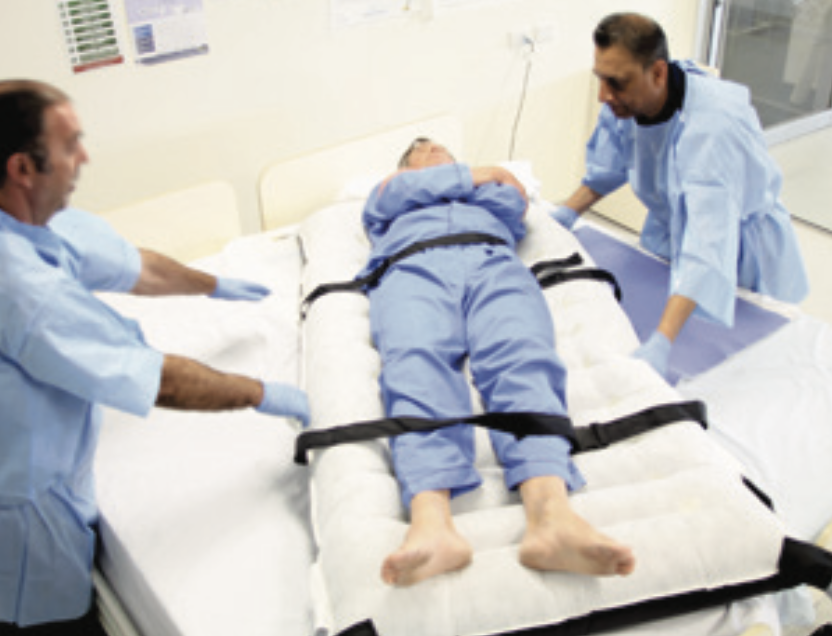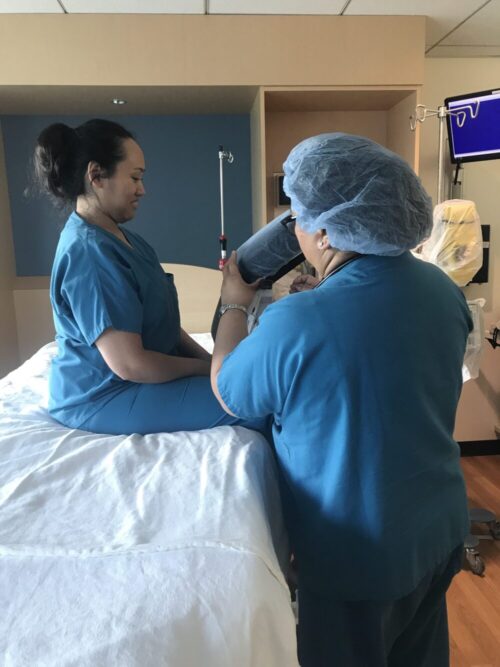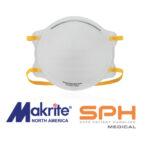SPH Medical is Improving Safety for Hospital Staff and Patients
SPH Medical is here to improve patient staff safety in labor and delivery and surgical units with the Epidural Positioning Device and the air transfer system.
COVID-19 is putting our healthcare workers at risk. Manually handling patients under normal conditions is known to put our nurses, doctors, and other healthcare workers at risk. Now more than ever hospital staff need to have the right tools to help move, support, lift and transfer patients. The EPD and air powered lateral transfer system improve patient and staff safety especially during this time of heightened concern about infection prevention.
SPH Medical Provides Safe Patient Handling Solutions to Healthcare Facilities
SPH Medical provides Safe Patient Handling solutions to healthcare facilities which means that we protect our frontline caregivers by preventing infection and injuries.
Within Hospitals nurses are being asked to care for patients infected with Cov-Sars2 and other deadly viral and bacterial infections. In order to deal with these deadly infections the Infection Control Nurse within the hospital mandates that single patient use devices are used where possible to lift move and transfer patients. Single patient use items are essentially disposable items that are patient specific, which means that they don’t get used with other patients. The outside laundry system generally isn’t trusted with returning specialized items or hospital owned items back to the hospital so then hospital is forced to use “disposable” items where possible to minimize the risk of infection to other patients. At times this can seem costly, but the risk and cost of hospital acquired infections and and nursing injuries is well with the investment.
How Does this Relate to One of the Most Important Departments in the Hospital?
The Labor and Delivery department is where new mothers give birth to their children in what should be safe and infection free environment.
A large percentage of mothers are continuing to get cesarean section procedures (cite sources and %) even in today’s COVID-19 environment.
With the c-section procedure comes several high-frequency patient handling tasks that Put our nurses and doctors at risk every day, lateral transfers to the OB OR table and patient positioning during the epidural injection procedure.
First the Epidural. Positioning the patient in the proper position for the injection puts our nurses at risk of injury. (See other blog posts we’ve written). We solve this my by making the patient comfortable and eliminating the static holding by the nurse with the Epidural Positioning Device.
Once the patient has received the epidural successfully and the are ready to be moved to the OB OR for the C-section procedure that staff have to plan how to move the patient on and off the table safely. Keep in mind the patient can’t scoot across to the table. They can’t feel their lower half! The staff need to use a assistive tool to transfer the patient safely on and off the OR table. What solutions are available to accomplish this?
Lateral Transfer Devices Available on the Market
There are a variety of lateral transfer devices available on the market to help transfer patients safely to and from beds, gurneys, OR tables, and Imaging Tables.
There are simple Friction Reducing Devices such as slide sheets (“easy slide disposable“ from SPH Medical) Available in many styles: flat sheets with handles, tube style sheets, there are lateral transfer boards made out of plastic also called slider boards – these are not ideal as they don’t significantly reduce friction to safe levels, there are roller boards like the Rollerslide by SPH Medical which act like a co nveyer belt moving with the patient. Finally the gold standard of lateral transfer solutions is the air powered lateral transfer system which floats the patient on a comfortable layer of air between the two surfaces. This makes the transfer process not only more comfortable for the patient but also eliminates risk of injury to the nursing and hospital staff performing the transfer. You can find a well documented clinical evaluation on Friction Reducing Devices here by Andrea Baptiste, MA, CIE, Sruthi V. Boda, MS, Audrey L. Nelson, PhD, RN, FAAN, John D. Lloyd, PhD, MErgS, CPE, and William E. Lee, III, PhD.
nveyer belt moving with the patient. Finally the gold standard of lateral transfer solutions is the air powered lateral transfer system which floats the patient on a comfortable layer of air between the two surfaces. This makes the transfer process not only more comfortable for the patient but also eliminates risk of injury to the nursing and hospital staff performing the transfer. You can find a well documented clinical evaluation on Friction Reducing Devices here by Andrea Baptiste, MA, CIE, Sruthi V. Boda, MS, Audrey L. Nelson, PhD, RN, FAAN, John D. Lloyd, PhD, MErgS, CPE, and William E. Lee, III, PhD.
All Employees Should be Wearing the Appropriate Fluid Rated N95 Respirators
All employees should be wearing the appropriate fluid rated N95 respirators like the Makrite 9500-N95 which is FDA 510K approved for use as a surgical mask.
Summary
The EPD and air powered transfer system improve patient and staff safety. SPH Medical provides a total solution to reduce risks of infection and injury to our frontline caregivers in Labor and Delivery and throughout the hospital. This is not limited to Labor and Delivery departments. We are addressing similar risks throughout the entire hospital and continuum of care helping to create new standards for safety and protection of our healthcare workers. This is not about obesity and COVID. This is about caring for every patient and every nurse to improve patient outcomes and reduce risks of Infection and injury related to MSD’s and high-risk, high-frequency patient care tasks.
Please contact SPH Medical to learn more about improving safety in Labor and Delivery with air transfer systems and the EPD. To learn more about the Makrite N95 Mask options including the 9500-N95 and the SEKURA-N95.


